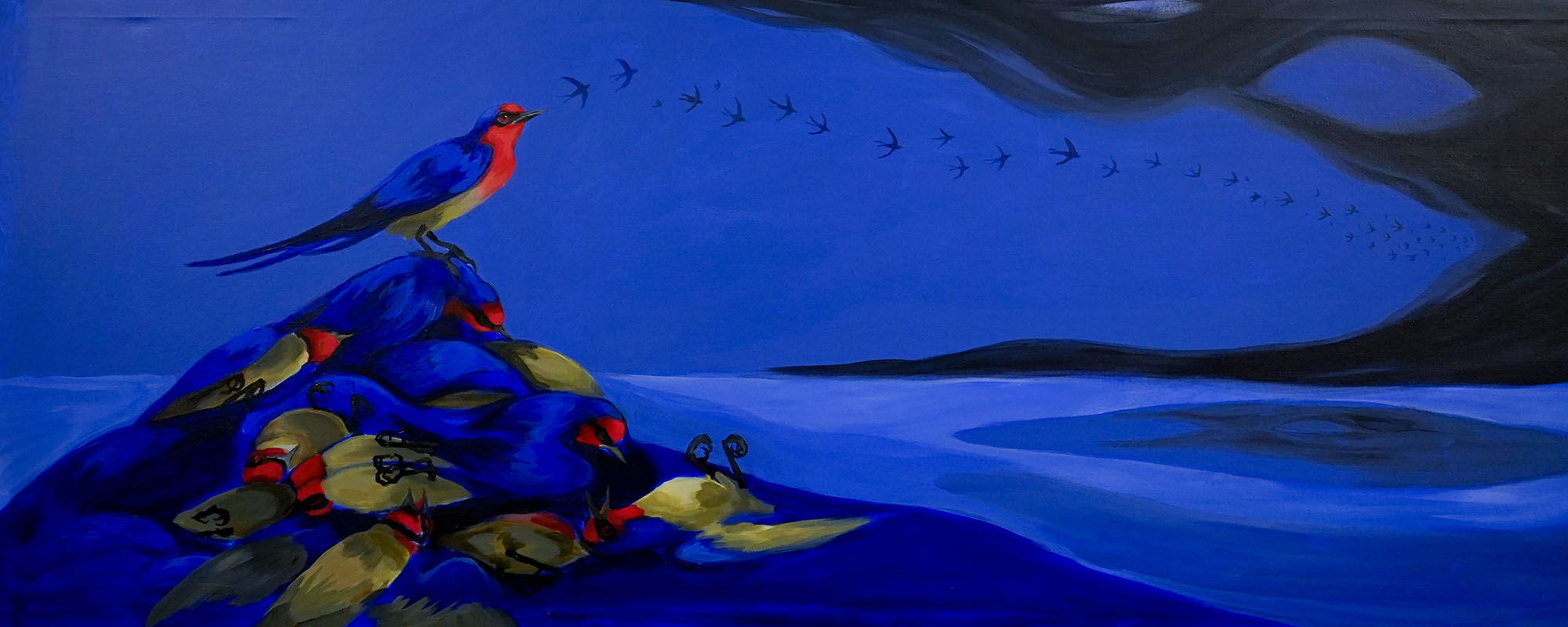Advances in technology and study offer improvements to the practice of interpreting, as evidenced by the recent installation of new interpreting equipment at UM’s Interpreters’ Lab, overseen by Dr Amy Colman. Her mission, however, is much broader as she seeks to share the story of interpreting itself as a practice with a long history.
Continue readingPhilosophy through (Science) Fiction: ‘What We Owe the Dead’
If it is true that philosophy is thinking about how we think, then the discipline’s characteristic scepticism and continuous self-questioning should also turn to the very mediation of philosophy.
Continue readingMigration Nation
Designer and visual artist Daniela Attard, known as ielladoodle, hosted Migration Nation, a multimedia art exhibit at Spazju Kreattiv. The exhibit deals with several important issues in both a worldwide and Maltese context. THINK visits the exhibit and speaks with Iella about her work and her time as a UM student.
Continue readingCulinary Medicine: A Missing Ingredient in Medical Education
For her second-year physiology research project conducted under the supervision of Chev. Prof. Renald Blundell from UM’s Department of Physiology and Biochemistry, Courtney Ekezie focused on sustainable food systems and their impact on human health. The study briefly mentioned culinary medicine – an aspect that later inspired this article for THINK.
Continue readingPoetry in Motion: Celebrating World Poetry Day at the UM Library
Words have the power to heal, inspire, and connect. On 21 March, the University of Malta Library, in collaboration with Poetry Jam Malta, invites you to an evening of poetic expression as we celebrate World Poetry Day.
Continue readingUM’s First SEA-EU Blended Intensive Programme
In February 2025, the University of Malta hosted its first Blended Intensive Programme (BIP) on tourism sustainability in conjunction with the International Office and SEA-EU Office. THINK Editor Rebekah Zammit caught up with Dr John Ebejer from UM’s Department of Tourism Management to ask a few questions about the BIP.
Continue readingPostcards to the Self: Memory, Art, and the Spaces In Between
Following her studies with UM’s Faculty of Media & Knowledge Sciences, Michelle Gialanze conducted her research on the art of remembering through a physical yet still ephemeral archive – postcards. Under the supervision of Prof. Vince Briffa and Nicole Pace from the Department of Digital Arts, she presented her final research entitled: Utilising Postcards to Create an Autobiographical Artefact of Memories of an Event.
Continue readingTogether for Our Seas
The University Maritime Platform (UMP) serves as a platform bringing experts from various backgrounds together to work on marine and maritime issues. This year, UMP is organising an international conference to foreground and discuss such concerns.
Continue readingURNA: Bonding Flame
URNA is Malta’s response to the 5th edition of the London Design Biennale 2025. THINK speaks to curator Andrew Borg Wirth and Arts Council Malta Internationalisation Executive Romina Delia to learn how this project seeks to create a connection between souls when experiencing a loss.
Continue readingMaltaHip Project: When Ideas Become Reality
The earliest recorded attempts at hip replacement date back to 1891. At the time, ivory was proposed to replace the femoral heads of patients whose hip joints had been destroyed by tuberculosis. Since then, everything changed. THINK speaks to the MaltaHip Team to learn about their innovative hip replacement technology.
Continue reading









